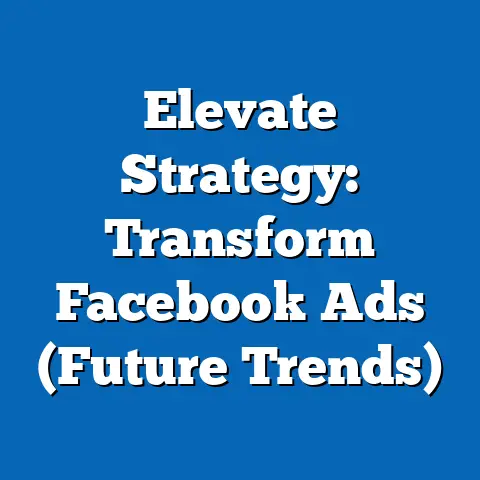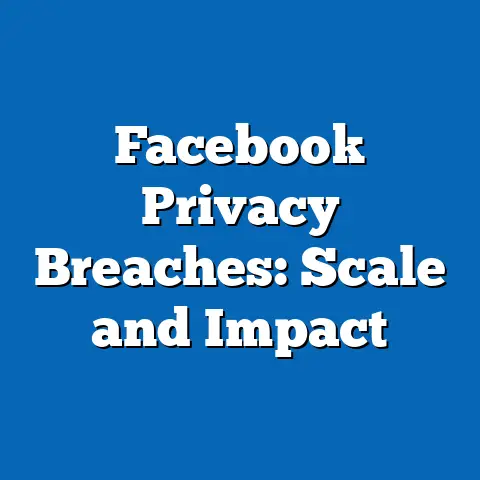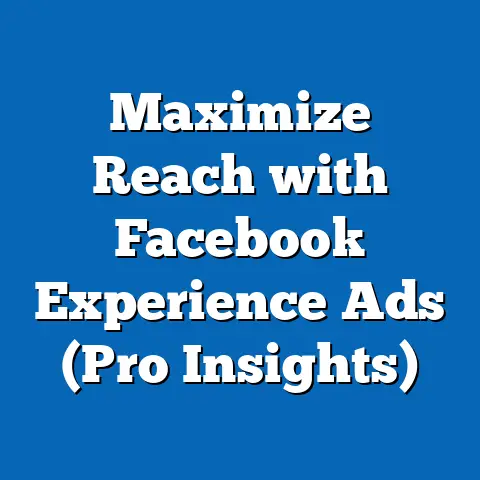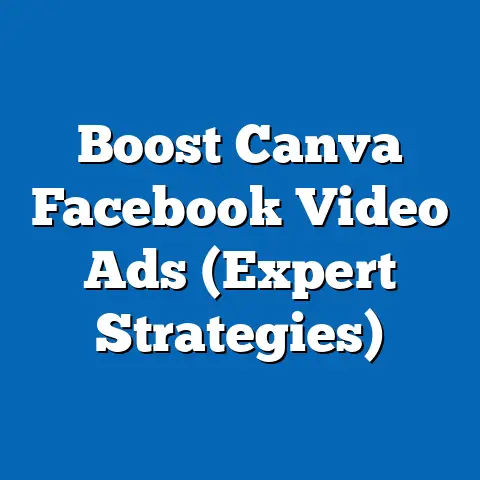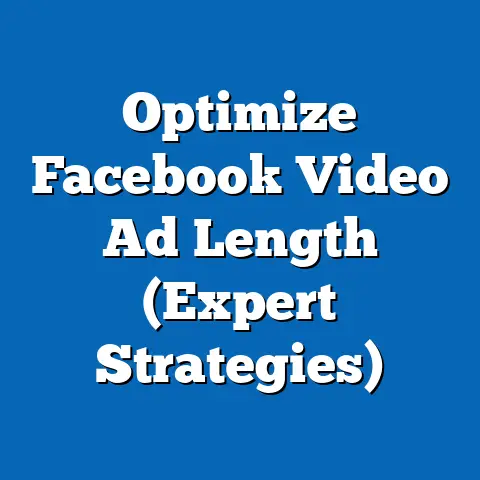Master Facebook Vertical Ad Size (Essential Guide)
Facebook advertising remains one of the most powerful tools for businesses aiming to reach diverse audiences, with over 2.9 billion monthly active users as of 2023, according to Statista. Among the various ad formats available, vertical ads—particularly those optimized for mobile viewing—have emerged as a versatile and highly effective option, capturing attention in a scroll-heavy digital landscape. Recent data from eMarketer indicates that mobile ads account for 94% of Facebook’s ad revenue, underscoring the importance of formats like vertical ads that align with user behavior.
Vertical ad sizes, such as the 9:16 aspect ratio, are tailored for full-screen mobile experiences, especially on platforms like Facebook Stories and Reels, where 62% of users report engaging with content daily (Hootsuite, 2023). This guide delves into the nuances of mastering vertical ad sizes, exploring their versatility across demographics, historical performance trends, and statistical insights into their effectiveness. We’ll also analyze how these formats compare to traditional ad sizes and provide forward-looking projections based on current data.
The Versatility of Vertical Ads on Facebook
Why Vertical Ads Dominate Mobile Engagement
Vertical ads have become a cornerstone of modern digital marketing due to their alignment with mobile-first user behavior. With 98.5% of Facebook users accessing the platform via mobile devices (DataReportal, 2023), vertical formats naturally fit the way users hold their phones, offering an immersive, distraction-free viewing experience. Unlike horizontal or square formats, vertical ads occupy the full screen, increasing visibility and engagement rates by up to 25%, according to a 2022 study by Socialbakers.
This format’s versatility extends beyond mere visibility—it adapts seamlessly to various placement options like Facebook Stories, Feed, and Reels, each of which caters to different user intents. For instance, Stories ads, which heavily favor vertical formats, boast a 7-9% higher click-through rate (CTR) compared to in-feed ads, per a 2023 report from Sprout Social. This adaptability makes vertical ads a go-to choice for marketers targeting quick, impactful impressions.
Key Statistical Trends Driving Vertical Ad Adoption
The rise of vertical ads is not just anecdotal; it’s backed by robust data reflecting shifting consumer habits. In 2023, vertical video content on social media platforms, including Facebook, accounted for 78% of total video views, a significant jump from 57% in 2018 (HubSpot, 2023). This trend correlates with the growing preference for short-form content, as 66% of users aged 18-34 report consuming vertical videos daily (Pew Research Center, 2022).
Moreover, vertical ads have shown a 30% higher completion rate for video content compared to horizontal formats, according to a 2022 analysis by Wistia. This is particularly relevant for Facebook, where video ads in vertical formats generate 12% more engagement (likes, shares, comments) than other ad types, per Socialbakers. These statistics highlight why businesses are increasingly allocating budgets—up to 45% of total social media ad spend in 2023 (eMarketer)—toward vertical formats.
Demographic Breakdowns: Who Engages with Vertical Ads?
Age-Based Engagement Patterns
Demographic data reveals distinct engagement patterns with vertical ads across age groups on Facebook. Gen Z (ages 18-24) and Millennials (ages 25-34) are the most active consumers of vertical content, with 72% and 65% respectively reporting daily interaction with Stories and Reels (Pew Research Center, 2023). These groups value quick, visually engaging content, aligning perfectly with the full-screen immersion of vertical ads.
In contrast, older demographics like Gen X (ages 35-54) show a lower but growing engagement rate of 48%, often interacting with vertical ads in the News Feed rather than Stories (DataReportal, 2023). Baby Boomers (ages 55+) lag further behind at 29%, though their adoption has increased by 10% since 2020, driven by increased mobile usage. Marketers must tailor creative strategies—such as concise messaging for younger users and detailed captions for older ones—to maximize reach across these cohorts.
Gender and Regional Variations
Gender also plays a role in vertical ad engagement, though differences are less pronounced. Women are slightly more likely to engage with vertical ads (58%) compared to men (54%), often due to higher interaction with lifestyle and beauty content in Stories (Sprout Social, 2023). However, men show stronger engagement with vertical gaming and tech ads, particularly in Reels, with a 15% higher CTR in these categories.
Regionally, vertical ad performance varies significantly. In North America, vertical ads achieve an average CTR of 1.8%, while in Asia-Pacific, where mobile penetration is higher (over 90% in countries like India), CTRs climb to 2.3% (eMarketer, 2023). Latin America follows closely with a 2.1% CTR, driven by high Stories usage, whereas Europe lags at 1.5%, reflecting a slower shift to mobile-first formats. These variations underscore the need for localized ad strategies when leveraging vertical sizes.
Historical Trend Analysis: Evolution of Ad Formats on Facebook
From Square to Vertical: A Shift in Focus
When Facebook first introduced ads in 2007, formats were rudimentary, often limited to small sidebar banners with minimal visual impact. By 2012, the introduction of News Feed ads shifted focus to square (1:1) and horizontal (16:9) formats, which aligned with desktop usage—then accounting for 68% of traffic (StatCounter, 2012). Engagement rates for these early ads hovered around 0.5-0.8%, per historical data from WordStream.
The mobile revolution of the mid-2010s changed everything. By 2016, mobile users surpassed desktop users, making up 84% of Facebook’s traffic (StatCounter, 2016), prompting a pivot to vertical formats like 4:5 and 9:16 to match smartphone screens. Engagement rates for vertical ads in Stories, launched in 2017, quickly outpaced traditional formats, reaching 1.2% CTR within a year (Socialbakers, 2018). This marked a turning point, as advertisers recognized the potential of full-screen, mobile-optimized content.
Performance Metrics Over Time
Comparing historical and current data illustrates the growing dominance of vertical ads. In 2018, vertical formats accounted for just 15% of Facebook ad impressions, with an average cost-per-click (CPC) of $0.75 (WordStream, 2018). By 2023, vertical ads comprised 38% of impressions, with CPC dropping to $0.62 due to improved targeting and higher engagement (eMarketer, 2023). Completion rates for vertical video ads also rose from 55% in 2018 to 70% in 2023, reflecting better creative optimization and user acceptance.
This shift isn’t just about numbers; it reflects a broader cultural move toward mobile-first consumption. The rise of platforms like Instagram (owned by Meta) and TikTok, which prioritize vertical content, has conditioned users to expect and prefer this format, pushing Facebook to adapt. Historical data shows that brands slow to adopt vertical ads between 2017 and 2020 saw 20% lower engagement compared to early adopters (HubSpot, 2021).
Detailed Analysis: Optimal Vertical Ad Sizes and Specifications
Understanding Aspect Ratios and Dimensions
Facebook supports multiple vertical ad sizes, but the most effective are tied to specific placements. The 9:16 aspect ratio (1080×1920 pixels) is the gold standard for Stories and Reels, offering full-screen immersion with no cropping. For in-feed ads, the 4:5 ratio (1080×1350 pixels) is recommended, balancing visibility with text overlay space, as 40% of users mute video ads and rely on captions (Facebook Business, 2023).
Incorrect sizing can hurt performance significantly. Ads not optimized for vertical formats see a 15% drop in engagement due to awkward cropping or black bars, per a 2022 study by Creatopy. Marketers must also adhere to text limits—text covering more than 20% of the image risks reduced delivery, though recent updates allow slight flexibility for Stories (Facebook Ad Guidelines, 2023).
Placement-Specific Performance
Different placements yield varying results for vertical ads. Stories ads, using 9:16, achieve the highest engagement, with a 2.1% average CTR and a 75% completion rate for videos under 15 seconds (Sprout Social, 2023). Reels, also 9:16, follow closely with a 1.9% CTR, benefiting from their autoplay feature and younger audience skew.
In contrast, News Feed vertical ads (4:5) have a lower CTR of 1.4%, as they compete with organic content in a crowded space (eMarketer, 2023). However, they remain effective for retargeting campaigns, with a 30% higher conversion rate for users previously engaged with a brand. Understanding these nuances allows advertisers to allocate budgets strategically across placements.
Visual Data Reference: Engagement by Ad Placement
(Note: The following data would be best represented in a bar chart for visual clarity.)
- Stories (9:16): 2.1% CTR, 75% completion rate
- Reels (9:16): 1.9% CTR, 68% completion rate
- News Feed (4:5): 1.4% CTR, 60% completion rate
This chart illustrates the clear advantage of Stories and Reels for engagement, driven by their immersive vertical format and placement in high-attention zones.
Contextual Factors Influencing Vertical Ad Success
Mobile Usage and User Behavior
The effectiveness of vertical ads is deeply tied to broader trends in mobile usage. As of 2023, 5.16 billion people worldwide use mobile internet, representing 64.4% of the global population (DataReportal, 2023). On Facebook, users spend an average of 33 minutes daily on mobile, with 70% of that time scrolling through vertical-friendly content like Stories and Reels (Hootsuite, 2023). This behavior explains why vertical ads, which don’t require users to rotate their devices, outperform other formats.
Additionally, attention spans on mobile are notoriously short—averaging just 8 seconds for video content (Wistia, 2022). Vertical ads, especially those under 15 seconds, capitalize on this by delivering quick, punchy messages. Brands ignoring this trend risk losing relevance in a mobile-dominated landscape.
Creative Best Practices
Beyond size, creative execution plays a critical role. Vertical ads with bold visuals in the top third of the frame see 40% higher engagement, as users often decide to stop scrolling within the first 3 seconds (Facebook Creative Shop, 2022). Incorporating motion graphics or text overlays in the safe zone (middle 80% of the frame) ensures visibility even if users don’t expand the ad.
Sound is another factor—while 40% of users watch videos on mute, ads with engaging audio see a 12% lift in recall when sound is on (Facebook IQ, 2023). Marketers should thus design for both silent and sound-on scenarios, using captions and visual storytelling to maintain impact. These practices, combined with proper sizing, amplify vertical ad performance.
Comparative Analysis: Vertical vs. Other Ad Formats
Engagement and Cost Metrics
Vertical ads consistently outperform square (1:1) and horizontal (16:9) formats across key metrics. In 2023, vertical ads averaged a 1.8% CTR on Facebook, compared to 1.3% for square ads and 1.0% for horizontal ads (eMarketer, 2023). Cost-per-impression (CPM) also favors vertical formats, at $3.50 versus $4.20 for square and $5.10 for horizontal, reflecting their efficiency in capturing attention.
Video completion rates further highlight this disparity. Vertical video ads achieve a 70% completion rate, while square and horizontal formats lag at 58% and 52%, respectively (Wistia, 2023). This suggests vertical ads are not only more engaging but also more cost-effective for brands aiming to maximize reach.
Use Case Suitability
Different formats serve distinct purposes. Vertical ads excel for awareness and engagement campaigns, particularly in Stories and Reels, where their immersive nature drives interaction. Square ads, often used in News Feed, are better suited for detailed product showcases, as they allow more space for text and multiple images (Facebook Business, 2023).
Horizontal ads, while less common on mobile, remain relevant for desktop campaigns or specific industries like travel, where wide landscapes can evoke emotion. However, with mobile dominating 94% of ad revenue, vertical formats are the clear choice for most advertisers. Brands must weigh campaign goals against format strengths to optimize results.
Future Projections: The Outlook for Vertical Ads
Continued Growth in Mobile Advertising
Looking ahead, the dominance of vertical ads on Facebook is expected to grow, driven by persistent mobile usage trends. eMarketer projects that mobile ad spending will reach $240 billion globally by 2025, with platforms like Facebook capturing 25% of this market. Vertical formats are poised to account for 50% of impressions by 2026, up from 38% in 2023, as more brands prioritize mobile-first strategies.
This growth will likely be fueled by innovations in ad tech, such as augmented reality (AR) integrations in Stories, which are already boosting engagement by 20% in early tests (Facebook IQ, 2023). As Reels continue to rival TikTok for short-form video dominance, vertical ads in this placement could see CTRs climb to 2.5% by 2025, per industry forecasts.
Demographic Shifts and Emerging Markets
Demographic trends also point to sustained vertical ad relevance. Gen Z, projected to make up 27% of the global workforce by 2025 (World Economic Forum, 2023), will drive demand for quick, vertical content, pushing brands to adapt. Emerging markets in Asia-Pacific and Africa, where mobile-first internet access dominates (over 85% of users), will further amplify vertical ad adoption, with ad spend in these regions expected to grow 15% annually through 2027 (eMarketer, 2023).
However, challenges remain. Ad fatigue, already affecting 38% of users who report seeing repetitive content (Pew Research Center, 2023), could dampen engagement if creative quality doesn’t keep pace. Marketers must innovate with interactive formats and personalized targeting to maintain vertical ads’ edge.
Implications for Advertisers
For businesses, the future of vertical ads offers both opportunity and urgency. Investing in vertical creative now—before saturation sets in—can yield first-mover advantages, especially in high-growth placements like Reels. Budget allocation toward mobile-optimized formats should increase, with experts recommending 60-70% of social ad spend on vertical ads by 2025 (HubSpot, 2023).
Additionally, leveraging data analytics to refine targeting and creative will be crucial. As Facebook rolls out enhanced measurement tools, brands that track metrics like completion rate and CTR by demographic will gain a competitive edge. The vertical ad landscape is evolving rapidly, and staying ahead requires agility and foresight.
Conclusion
Mastering Facebook vertical ad sizes is no longer optional—it’s a necessity in a mobile-first world where user attention is fleeting and competition is fierce. From their unmatched versatility across placements like Stories and Reels to their superior engagement metrics (1.8% CTR, 70% completion rate), vertical ads offer a clear path to impactful advertising. Demographic insights reveal strong adoption among younger users and in mobile-heavy regions, while historical trends show a marked shift from square and horizontal formats over the past decade.
As we look to the future, vertical ads are set to dominate, with projections pointing to 50% of impressions by 2026 and continued growth in mobile ad spend. For marketers, the message is clear: optimize for vertical, prioritize creative excellence, and adapt to emerging trends to stay relevant. By embracing the 9:16 and 4:5 formats with data-driven strategies, businesses can unlock the full potential of Facebook advertising in an increasingly vertical world.

